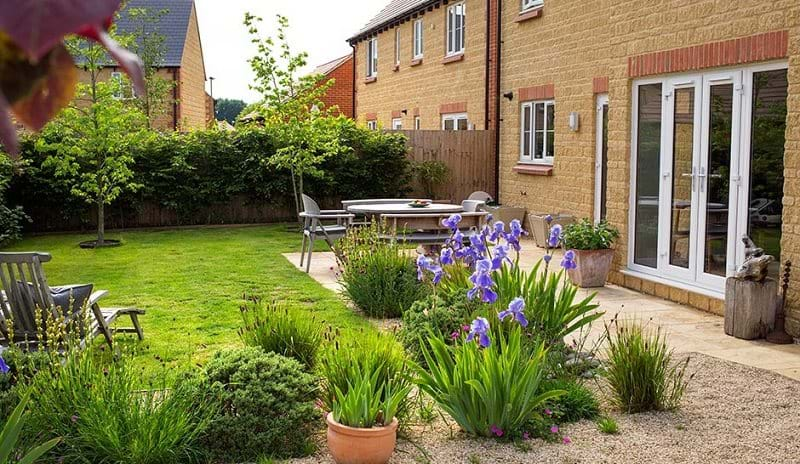New build homes are great; they're modern, energy-efficient, stylish, and, of course, brand new. But with increasing pressure for space in the UK, they are not always blessed with the biggest gardens.
However, this is not the end of the world, and in fact, can be a positive as there's less of a burden to maintain a large garden. It also means a little creativity is required to maximise the use of space.
Designing a garden for a new build house
Before embarking on transforming your outdoor space, here are some important things to consider when deciding on the type of design you want for your new build home garden.
Check your garden site
To start, think about the type of garden you want and how that relates to your new build garden's original size and features. For example, if the garden has a large lawn you may want to keep this if you have a family, if there is a large muddy area this could be kept and used for planting, or you may designate a particular zone for a patio.
Is the lawn well-bedded
If you have a lawn that is poorly laid on unprepared soil, potentially with construction rubble underneath, then you may be better off lifting it at this early stage and relaying it or replacing it with an alternative surface depending on your preferences.
Check the garden for areas of waterlogging
It will be very difficult to embark on your new build garden transformations if the garden has drainage issues. Check the garden's ability to drain well - essential for a healthy garden - and if necessary, install drainage features in areas of the garden prone to waterlogging.
Check for tree types in the garden
If there are large trees check they are spaced out and not too close to the house, if they are then they should be removed as soon as possible. It is unlikely that there would be large trees planted in new build gardens, but if there are, just check with your local council that there are no Tree Preservation Orders in place.

A new build garden can be transformed into a place of beauty and privacy
Key consideration for new build gardens
Assess the soil in the garden
For successful growing, you'll need to know whether the soil in your new garden is acid, alkaline, or neutral. This will affect the type of plants you will be able to have.
It may be that you'll need to purchase some topsoil or compost if your new build garden soil is low in nutrients, this is particularly the case with new build gardens that you are hoping to cultivate with plants, shrubs and trees.
Decide on which plants you would like to plant
When you have assessed the site of your garden and know the soil type and quality, you’ll have an idea of what types of plants will be most suited to transform your new build garden.
You may require plants that thrive in well-drained soil, for example, or you may need more hardy shrubs if you have clay-like soil. Then it's a case of planning where each plant type is put, for example, a shady area will require different plants to fully sunlit zones of the garden.
Consider how you will maintain your garden
You can work on your new-build garden throughout the year, but it is recommended to spend time cultivating the soil in autumn or spring, then plant in the spring or autumn. It's also recommended to leave the soil in winter and when it is wet to avoid compaction.
New build garden privacy
Small urban gardens can be overlooked by other houses and there’s a real need for privacy. Most new build gardens will have some form of fencing along the boundaries.
Existing fencing may be unsightly, but it can be transformed with paint or smothered in climbers. Your privacy can further be enhanced by an evergreen screen of evergreen trees or hedges. There are a selection of evergreen trees that can be used in small urban gardens, for example, the small-leafed Euonymus fortunei, which provide much-needed screening, shelter, and dampen sound.